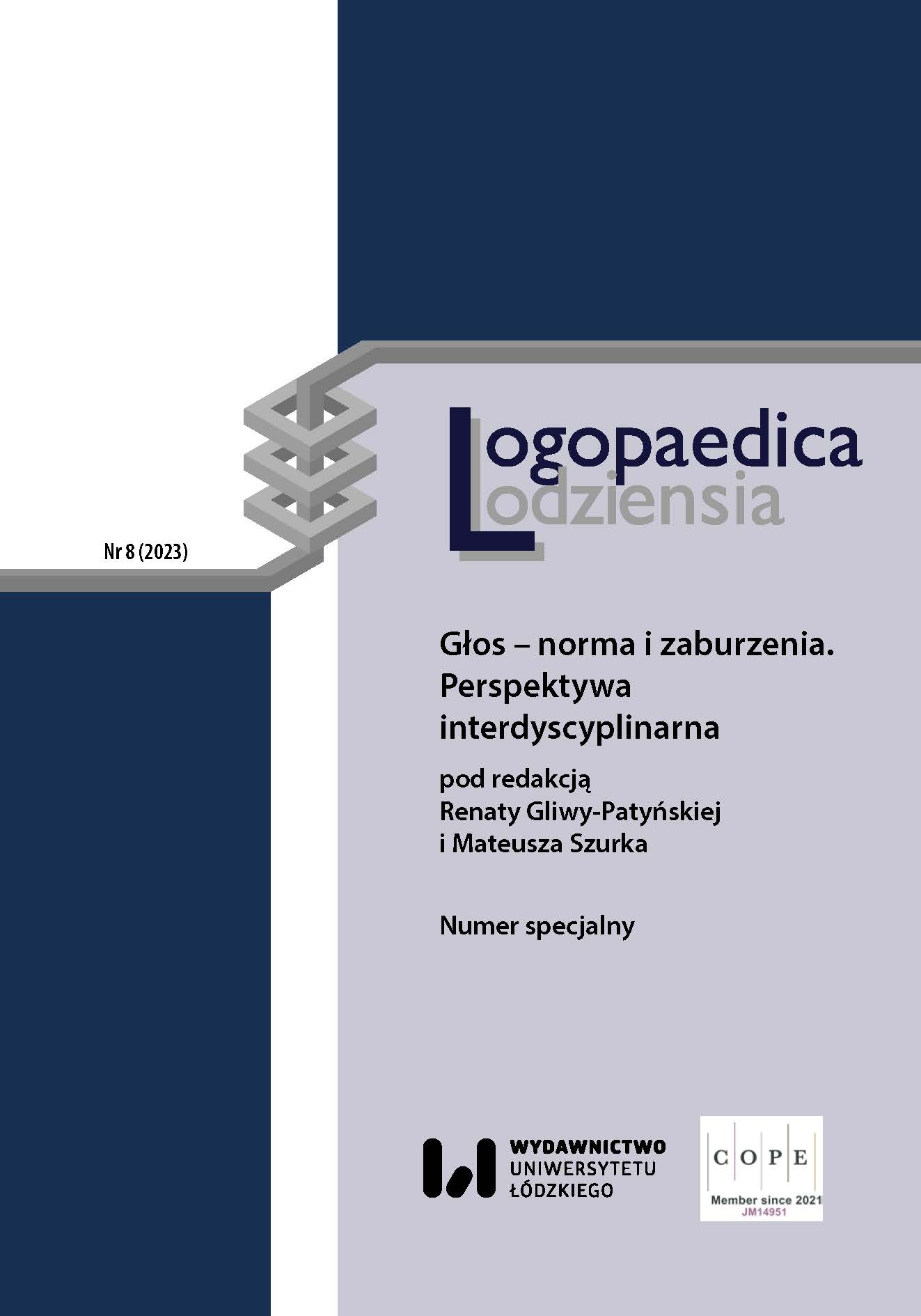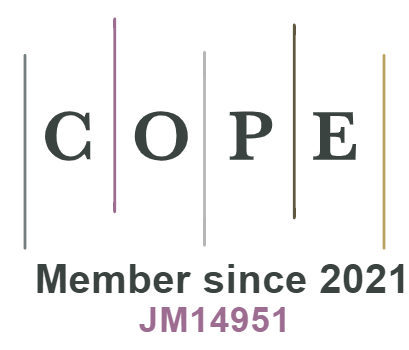Trans Woman Voice Questionnaire: Adaptation and Validation into Polish
DOI:
https://doi.org/10.18778/2544-7238.08.04Keywords:
TWVQ, voice feminisation, voice therapy, transgender women, gender dysphoniaAbstract
The Trans Woman Voice Questionnaire (TWVQ) is a diagnostic tool designed especially for feminising voice therapy. It complements the objective diagnosis with the patient’s subjective perspective. The therapist receives invaluable feedback about the client’s needs and expectations. The client receives the opportunity to better understand her own approach towards her voice. Originally created in English, the TWVQ required translation into Polish. Translation procedure, followed by adaptation and validation, was conducted in accordance with the rigorous WHO’s guidelines and with transgender patients’ participation. The Polish version of TWVQ was accepted by the co‑author and now is available online free of charge. Polish speech‑language pathologists have received an especially designed tool that may be helpful in voice feminising therapy.
Downloads
References
American Psychiatric Association, 2013, Diagnostic and statistical manual of mental disorders, Arlington: American Psychiatric Publishing.
Google Scholar
DOI: https://doi.org/10.1176/appi.books.9780890425596
Azul D., Neuschaefer‑Rube C., Nygren U., Södersten M., 2017, Transmasculine People’s Voice Function: A Review of the Currently Available Evidence, „Journal of Voice”, Vol. 31(2), s. 261.e9–261.e23.
Google Scholar
DOI: https://doi.org/10.1016/j.jvoice.2016.05.005
Bruin M.D. de, Coerts M.J., Greven A.J., 2000, Speech Therapy in the Management of Male‑to‑Female Transsexuals, „Folia Phoniatrica et Logopaedica”, Vol. 52, s. 220–227.
Google Scholar
DOI: https://doi.org/10.1159/000021537
Byrne L.A., 2007, My life as a woman: Placing communication within the social context of life for transsexual women, PhD thesis, La Trobe University, Melbourne.
Google Scholar
Dacakis G., Davies S., 2012, Trans Woman Voice Questionnaire, La Trobe University, Melbourne, University of British Columbia, Vancouver.
Google Scholar
Dacakis G., Oates J., Douglas J., 2012, Beyond voice: Perceptions of gender in male‑to‑female transsexuals, „Current Opinion in Otolaryngology and Head and Neck Surgery”, Vol. 20(3), s. 165–170.
Google Scholar
DOI: https://doi.org/10.1097/MOO.0b013e3283530f85
Dacakis G., Oates J., Douglas J., 2017, Associations between the Transsexual Voice Questionnaire (TVQMtF) and self‑report of voice femininity and acoustic voice measures, „International Journal of Language & Communication Disorders”, Vol. 52(6), s. 831–838.
Google Scholar
DOI: https://doi.org/10.1111/1460-6984.12319
Dacakis G., Davies S., Oates J., Douglas J., Johnston J., 2013, Development and Preliminary Evaluation of the Transsexual Voice Questionnaire for Male‑to‑Female Transsexuals, „Journal of Voice”, Vol. 27(3), s. 312–320.
Google Scholar
DOI: https://doi.org/10.1016/j.jvoice.2012.11.005
Grabias S., 2015, Postępowanie logopedyczne. Standardy terapii, [w:] S. Grabias, J. Panasiuk, T. Woźniak (red.), Logopedia. Standardy postępowania logopedycznego, Lublin: Wydawnictwo Uniwersytetu Marii Curie‑Skłodowskiej, s. 13–35.
Google Scholar
Grabski B., Mijas M., Dora M., Iniewicz G. (red.), 2020, Dysforia i niezgodność płciowa. Kompendium dla praktyków, Warszawa: Wydawnictwo Lekarskie PZWL.
Google Scholar
Hancock A., Colton L., Douglas F., 2014, Intonation and gender perception: Applications for transgender speakers, „Journal of Voice”, Vol. 28(2), s. 203–209.
Google Scholar
DOI: https://doi.org/10.1016/j.jvoice.2013.08.009
Jacobson B.H., Johnson A., Grywalski C., Silbergleit A., Jacobson G., Benninger M.S., 1997, The voice handicap index (VHI): development and validation, „American Journal of Speech Language Pathology”, Vol. 6(3), s. 66–70.
Google Scholar
DOI: https://doi.org/10.1044/1058-0360.0603.66
Leung Y., Oates J., Pang Chan S., 2018, Voice, Articulation and Prosody Contribute to Listener Perceptions of Speaker Gender: A Systematic Review and Meta‑Analysis, „Journal of Speech, Language, and Hearing Research”, Vol. 61(2), s. 266–297.
Google Scholar
DOI: https://doi.org/10.1044/2017_JSLHR-S-17-0067
Linde‑Usiekniewicz J. (red.), 2002, Wielki słownik angielsko‑polski PWN‑Oxford, Warszawa: Wydawnictwo Naukowe PWN.
Google Scholar
Neumann K., Welzel C., 2004, The importance of the voice in male‑to‑female transsexualism, „Journal of Voice”, Vol. 18(1), s. 153–167.
Google Scholar
DOI: https://doi.org/10.1016/S0892-1997(03)00084-5
Novais Valente Junior C., Mesquita de Medeiros A., 2022, Voice And Gender Incongruence: Relationship Between Vocal Self‑Perception And Mental Health Of Trans Women, „Journal of Voice”, Vol. 36, s. 739–882.
Google Scholar
DOI: https://doi.org/10.1016/j.jvoice.2020.10.002
Oates J., Dacakis G., 1997, Voice change in transsexuals, „Venereology”, Vol. 10(3), s. 178–187.
Google Scholar
Rawa‑Kochanowska A., 2011, Poczucie tożsamości płciowej w teorii i badaniach, Warszawa: Wydawnictwo Difin.
Google Scholar
Stempień J., 2021, Standard postępowania logopedycznego w przypadku osób transpłciowych przechodzących tranzycję, praca dyplomowa na Pomagisterskim Studium Logopedycznym Uniwersytetu Warszawskiego, Warszawa.
Google Scholar
Światowe Stowarzyszenie Specjalistów(‑tek) do spraw Zdrowia Osób Transpłciowych (WPATH), 2022, Standardy opieki zdrowotnej dla osób transseksualnych, transpłciowych i różnorodnych płciowo (wersja ósma), https://www.wpath.org/soc8 (dostęp: 15.01.2023).
Google Scholar
World Health Organization, 2019, ICD–11. International Classification of Diseases 11th Revision. The global standard for diagnostic health information, https://icd.who.int (dostęp: 15.01.2023).
Google Scholar
Downloads
Published
How to Cite
Issue
Section
License

This work is licensed under a Creative Commons Attribution-NonCommercial-NoDerivatives 4.0 International License.












